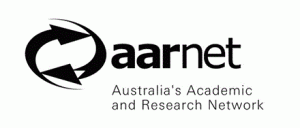 AARNet, Australia’s Academic and Research Network, today announced the launch of the Australia Wide-Area SDN Testbed, an innovation platform for developing high-speed technologies, established in collaboration with nine universities and CSIRO Data61. The announcement was made during the Open Networking Foundation SDN Down Under event in Sydney.
AARNet, Australia’s Academic and Research Network, today announced the launch of the Australia Wide-Area SDN Testbed, an innovation platform for developing high-speed technologies, established in collaboration with nine universities and CSIRO Data61. The announcement was made during the Open Networking Foundation SDN Down Under event in Sydney.
Software Defined Networking (SDN) is an emerging technology with the potential to revolutionise the way networks are provisioned and managed. SDN offers solutions for improving network flexibility and reducing costs via software-based management and control.
A real-world research environment
“The Testbed is a real-world research network environment, a simulation of the Internet that we’ve put in place to make it easier for researchers in the fields of computer science, engineering and mathematics to test, prototype and validate advanced networking concepts in the SDN arena and accelerate the development of high-speed networking. Developing and supporting initiatives to explore what the future network might look like has been a focus of AARNet’s work since its early days of pioneering the Internet in Australia,” says AARNet’s CEO Chris Hancock.
David Wilde, AARNet’s Chief Technology Officer says access to a wide-area SDN testbed provides researchers with new opportunities to exploit the potential of SDN.
“We know SDN works in single domain environments, like the campus and data centre, but little research has been undertaken to validate whether the technology works across multiple domains with different administrators, such as telco carriers and enterprises.”
A consortium of researchers from CSIRO Data61 and nine universities, led by the University of New South Wales (UNSW), secured LIEF (Linkage Infrastructure, Equipment and Facilities) grant funding from the Australian Research Council to deploy SDN equipment within each of their labs.
The other eight consortium members are University of Technology Sydney, Macquarie University, University of Adelaide, RMIT, Swinburne, University of Queensland, University of Wollongong and Australian National University.
To read full article please click here.
